Echeveria Elegans Mexican Snowballs: Succulent Care & Growing Guide
Written by Iris
Nov 11 2021
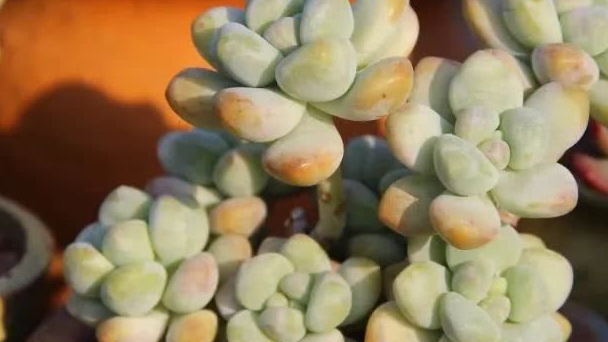
Echeveria Elegans Mexican Snowballs are one of the most popular Echeveria succulent types. Known as White Mexican Rose, the leaves of Echeveria Elegans are smooth with white powder, and the edges are translucent. The old Echeveria Elegans Mexican Snowballs, in particular, turn pink and look like a beautiful lotus blossom. Echeveria Elegans Mexican Snowballs are very popular with many people, but they don't know much about Echeveria Elegans Mexican Snowballs. It is an easy-care succulent that can be grown successfully both indoors and outdoors for beginners. The low-maintenance Echeveria Elegans succulent plants can surely add luster to your garden. So keep reading on how to care for and propagate Mexican Snowballs.
Echeveria Elegans Mexican Snowballs plant will look incredible indoors. Use a small container so it can grow in a compact and even pattern, but make sure the medium has space for new offsets. And since it also yields so many offsets throughout the year, you can leave it to grow and spread wildly in the garden. Make sure you grow it on the side of the garden that doesn't get more than 6 hours of direct sunlight.
If you live in a warm climate year-round, you can grow echeveria elegans directly in your garden bed. When planting in-ground, always provide Echeveria Elegans Mexican Snowballs with well-draining, sandy, or rocky soil to ward off diseases such as root rot.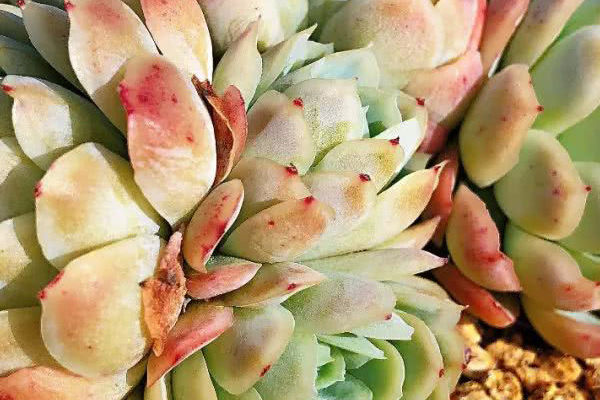
When watering, completely soak the soil. How frequently you will need to water this plant depends on the specific location that it is being grown in. For example, during the winter months for both indoor and outdoor plantings, watering may only be required once a month, but during the warmer weather, indoor and outdoor plantings may need to be watered once a week or once every two weeks.
The best way to determine when your Echeveria Elegans will need to be watered is by keeping a close eye on it. When the leaves look as if they’re dried out, it’s time to water the plant. Avoid overwatering, as it can cause root rot and can ultimate drown and kill the plant. It should be noted that the Echeveria Elegans Mexican Snowballs succulent leaves compact arrangement, so when watering try to avoid excessive watering on the leaves.
If you are growing these succulents outdoors and live in a climate colder than USDA zones 9-11, grow them in containers so they can be easily overwintered indoors.
If you’re planning to use bagged garden soil to plant your Mexican Snowball, you need to wait for 1 year to lapse before spraying it with synthetic fertilizer. Use 2-7-7 fertilizer twice a month every spring till the first quarter of fall and remember to dilute it with water.
This kind of fertilizer is not only suitable for cactus plants but also succulents since it’s easy to measure and dissolves in water to effortlessly get absorbed by the plant through the roots. Avoid using a fertilizer that’s made of nitrogen compounds exceeding 5%. When the nitrogen concentration is above this mark, it tends to disfigure your plant’s natural shape.
To rehabilitate a leggy Mexican snowball, cut off the top part of the stem that is not leggy and is still somewhat compact, and replant it in a separate container. After you have cut off the top part of the plant, remove the bottom few leaves from the new rosette to expose the bare stem. This bare part will be buried beneath the soil and develop new roots. Before planting the newly separated plant, allow the stem to callous over for 12-24 hours to prevent rot once it is planted.
Once calloused, the new plant can be potted in a standard cactus or succulent soil mix. Don’t water the new plant until roots have begun to form, after approximately 2-3 weeks.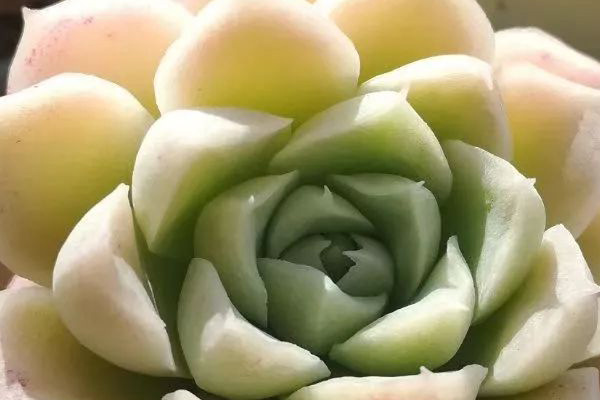
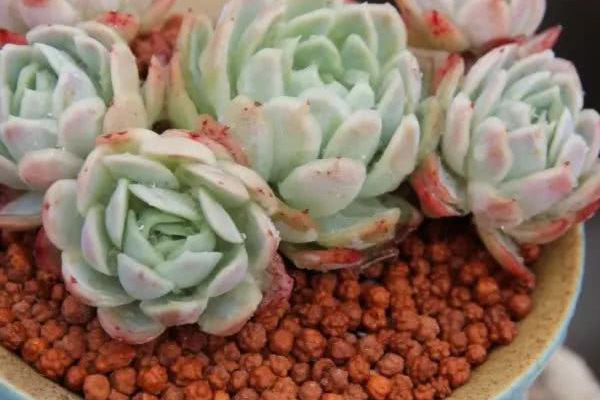
But looking on the bright side, the reward of being a little patient with this variety would potentially be so pleasing and all-embracing. If you treat this succulent fairly well, the payoff would be an awesome rosette made of blue-green or gray-green leaves that take the shape of small plastic spoons. While this plant struggles with growing as tall as other varieties in the family, it has a jam-packed potential to spread over the growing medium, especially if you’re using a compact container.
How do you tell if you're overwatering succulents?
If you notice that your Echeveria elegans succulent leaves are turning yellow or getting transparent, this can be a symptom of overwatering. You can confirm this by touching them if they feel mushy or soggy, then there’s no doubt that you should reduce the watering frequency and consider repotting to a well-drained soil mixture.
Read Next:
Echeveria Laui (Echeveria Succulent) Care Guide
Echeveria Agavoides Care & Propagation
Echeveria Pulvinata (Chenille Plant) Care & Propagation Guide
Echeveria Nodulosa (Painted Echeveria) Care Guide
Echeveria Imbricata (Blue Rose Echeveria) Grow & Care Guide
Echeveria Setosa: Grow & Care for Mexican Firecracker
Echeveria Black Prince Succulent Grow & Care Guide
Echeveria Runyonii Topsy Turvy Grow & Care Guide
Echeveria Takasago No Okina Care Guide
Echeveria Mebina Care Guide
Echeveria Elegans Mexican Snowballs InfoWhere to Grow Echeveria Elegans Mexican SnowballsHow to Grow Echeveria Elegans Mexican SnowballsEcheveria Elegans Propagation with OffsetsEcheveria Elegans Propagation with Leaf CuttingsHow to Care for Echeveria Elegans Mexican SnowballsEcheveria Elegans Lighting RequirementsEcheveria Elegans Soil CareEcheveria Elegans WateringEcheveria Elegans Temperature & Humidity CareEcheveria Elegans Fertilizer CareEcheveria Elegans Pruning CareEcheveria Elegans Pests & Diseases CareEcheveria Elegans Mexican Snowballs Alternative SucculentsEcheveria Elegans Mexican Snowballs Care FAQHow Big Does Echeveria Elegans Grow? Do Echeveria Elegans bloom?Why is my Echeveria Elegans flattening?
Echeveria Elegans Mexican Snowballs Info
| Botanical/Scientific Name | Echeveria Elegans |
| Common Name | Mexican Snowball, white Mexican rose, Mexican gem, Mexican Hens and Chicks |
| Plant Type | Succulent; Herbaceous Perennial |
| Plant Size | up to 8″ (20 cm) tall, up to 12″ (30.5 cm) wide |
| Light Requirements | Full sun to partial shade |
| Soil Requirements | Good drainage soil |
| Bloom Time | Spring; Long slender stalks of 5-7 pink tubular flowers with yellow tips in spring. Blooms multiple times in the plant's lifetime. |
| Dormant Time | Winter |
| Leaf Color | Blue, Gray/Silver, Green |
| Flower Color | Gold/Yellow, Orange, Pink |
| Propagation | Division; Leaf Cutting |
| Uses | Container plant |
| Toxic | non-toxic to humans and pets |
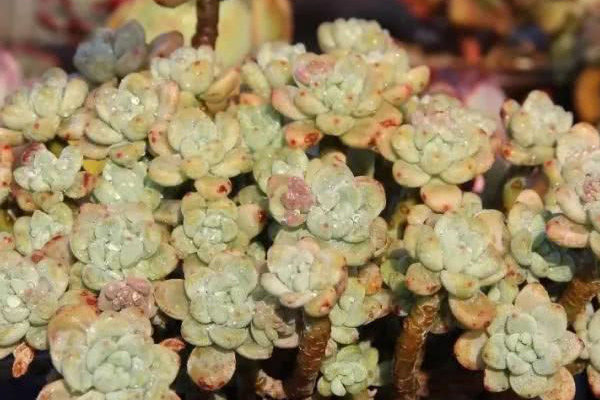
Where to Grow Echeveria Elegans Mexican Snowballs
If you live in a warm climate year-round, you can grow echeveria elegans directly in your garden bed. When planting in-ground, always provide Echeveria Elegans Mexican Snowballs with well-draining, sandy, or rocky soil to ward off diseases such as root rot.
How to Grow Echeveria Elegans Mexican Snowballs
Echeveria Elegans Propagation with Offsets
Mexican Snowballs produce small offsets that develop around the base of the plant. You can use these offsets to propagate new plants. To do so, just remove the offsets from the soil and set them aside to dry for a day or two.- Fill a container that features a drainage hole with well-draining soil (either pre-made succulent soil or substrate that you have mixed yourself), soak the soil, and plant the dried-out offset a shallow hole in the soil. The roots should be covered, but they should not be placed too deep in the soil.
- Water the re-planted offsets when the soil appears to be fully dried out or when the leaves of the offset appear to be shriveled.
Echeveria Elegans Propagation with Leaf Cuttings
To propagate Echeveria Elegans from the leaves, you need to:- select a healthy, firm leaf. Avoid using leaves that seem to have spots or suffering from excessive thirst. Use a sharp knife to carefully dissect the leaves from the stem.
- The Echeveria Elegans Mexican Snowballs leaf should have a solid base attaching it to the stem. If the base of the leaf is missing, it’ll not develop firmly.
- Put the leaves outside for a day or two, to give the wounds some time to dry, but avoid putting it under direct sunlight. The surrounding conditions need to be warm and dry to quicken the healing process. Before planting your leaves, make sure the skin has hardened to keep them from rotting.
- You can dip the base of the leaves in a rooting hormone solution to accelerate the root growth. This, however, isn’t necessarily important.
- Prepare the potting soil using the cues we listed out earlier in this guide.
- Plant the leaves but don’t bury them so deep in the soil. Space the leaves out to give them room for growth. This also allows the offsets to develop without getting choked by the mother plant.
- Keep your newly planted mexican snowball far from direct sunlight during its early sprouting stages. Leaf cuttings tend to wither and get scorched when prematurely exposed to full sunlight.
- Mist the soil using a spray bottle if the room humidity levels are low.
- After 4 weeks, the roots will begin to grow.

How to Care for Echeveria Elegans Mexican Snowballs
Echeveria Elegans Lighting Requirements
Most succulents like light and Echeveria Elegans Mexican Snowballs are no exception. It takes a lot of light to make their leaves look rosy and beautiful. Except for summer, Echeveria Elegans mexican snowballs should be placed on the balcony of your home and exposed to direct sunlight in other seasons. Echeveria Elegans Mexican Snowballs will be shinier, and the leaves are getting tighter and tighter. Do not let Echeveria Elegans Mexican Snowballs lack light for a long time, otherwise, the leaves will be soft and droopy, and the color will be dull. So it's important to get plenty of light. In summer, the Echeveria Elegans should be properly shaded. It can be placed in the scattered light for 2-3 hours every morning or after the sun sets to prevent overgrowth. In Spring and autumn, Echeveria Elegans grow rapidly so they need to supplement enough light.Echeveria Elegans Soil Care
Echeveria Elegans Mexican Snowballs require excellent drainage, so choose or make a potting mix that provides it. A store-bought potting mix labeled for cacti and succulents will work well, or you can use an all-purpose potting mix and add coarse sand and/or aquarium gravel to lighten it and enhance drainage.Echeveria Elegans Watering
As with other types of succulents, Echeveria Elegans should be watered sporadically, but thoroughly. The “soak and dry” method is ideal for this plant. In other words, wait until the soil has dried out completely and the leaves have a shriveled appearance before watering.When watering, completely soak the soil. How frequently you will need to water this plant depends on the specific location that it is being grown in. For example, during the winter months for both indoor and outdoor plantings, watering may only be required once a month, but during the warmer weather, indoor and outdoor plantings may need to be watered once a week or once every two weeks.
The best way to determine when your Echeveria Elegans will need to be watered is by keeping a close eye on it. When the leaves look as if they’re dried out, it’s time to water the plant. Avoid overwatering, as it can cause root rot and can ultimate drown and kill the plant. It should be noted that the Echeveria Elegans Mexican Snowballs succulent leaves compact arrangement, so when watering try to avoid excessive watering on the leaves.
Echeveria Elegans Temperature & Humidity Care
As a desert plant, Mexican snowballs enjoy hot, dry conditions. They do not do well in overly humid conditions, and they cannot tolerate cold weather. Typical household temperature and humidity levels are fine for Mexican snowballs if you are growing them indoors.If you are growing these succulents outdoors and live in a climate colder than USDA zones 9-11, grow them in containers so they can be easily overwintered indoors.
Echeveria Elegans Fertilizer Care
Mexican Snowball doesn’t necessarily need any form of fertilizer to become fluffy and grow cheerfully. But over time, all the essential nutrients in the soil will fade off. So fertilizing your houseplant would help rejuvenate all the minerals that help keep your plant from looking pale and lanky.If you’re planning to use bagged garden soil to plant your Mexican Snowball, you need to wait for 1 year to lapse before spraying it with synthetic fertilizer. Use 2-7-7 fertilizer twice a month every spring till the first quarter of fall and remember to dilute it with water.
This kind of fertilizer is not only suitable for cactus plants but also succulents since it’s easy to measure and dissolves in water to effortlessly get absorbed by the plant through the roots. Avoid using a fertilizer that’s made of nitrogen compounds exceeding 5%. When the nitrogen concentration is above this mark, it tends to disfigure your plant’s natural shape.
Echeveria Elegans Pruning Care
These succulents do not require pruning; however, if Mexican snowballs become leggy, there are ways to cut them back and revitalize their compact flower-like shape.To rehabilitate a leggy Mexican snowball, cut off the top part of the stem that is not leggy and is still somewhat compact, and replant it in a separate container. After you have cut off the top part of the plant, remove the bottom few leaves from the new rosette to expose the bare stem. This bare part will be buried beneath the soil and develop new roots. Before planting the newly separated plant, allow the stem to callous over for 12-24 hours to prevent rot once it is planted.
Once calloused, the new plant can be potted in a standard cactus or succulent soil mix. Don’t water the new plant until roots have begun to form, after approximately 2-3 weeks.
Echeveria Elegans Pests & Diseases Care
Echeveria Elegans succulents are trouble free if kept on the dry side. However, mealy bug can cause a problem if plants are grown as house plants. These plant sucking pests appear as small white spots on the leaves. They look a little like cotton wool. If you spot mealy bugs, isolate the plant from other house plants. Wipe the foliage to remove the mealy bug and in extreme cases, dispose of the plant or turn to an insecticide.
Echeveria Elegans Mexican Snowballs Alternative Succulents
If you want to pair the “Mexican snowball” with other Echeveria type plants, or want an alternative to this Echeveria elegans, consider one or more of the following:- Echeveria harmsii (Red) – grows dark green leaves with red edges
- Echeveria Agavoides (Lipstick echeveria) – Agave like rosette, dark colored leaf tips
- Echeveria peacockii (Peacock echeveria) – produces light green leaves with orangish tip
- Echeveria derenbergii (Painted lady succulent) – small green leaves with beautiful purplish flowers
- Echeveria nodulosa (Painted echeveria) – features green leaves with red markings
- Echeveria ‘Perle von Nurnberg’ – (Pearl of Nurnberg) – a hybrid with Echeveria elegans being one of the parents.

Echeveria Elegans Mexican Snowballs Care FAQ
How Big Does Echeveria Elegans Grow?
Echeveria Elegans usually don’t grow so tall or wide. They’re petite plants that seamlessly fit in a compact growing pot. So don’t expect your Mexican Snowball to grow beyond 8″ inches in height. It also typically spans to about 12″ inches wide when it hits its golden years. In contrast to other options that you might have in mind, Echeverias are slow-growing houseplants and can take a couple of years to develop a mature look.But looking on the bright side, the reward of being a little patient with this variety would potentially be so pleasing and all-embracing. If you treat this succulent fairly well, the payoff would be an awesome rosette made of blue-green or gray-green leaves that take the shape of small plastic spoons. While this plant struggles with growing as tall as other varieties in the family, it has a jam-packed potential to spread over the growing medium, especially if you’re using a compact container.
Do Echeveria Elegans bloom?
Yes, the Echeveria Elegans tends to bloom in early spring and give life to pink flowers that have yellow tips.Why is my Echeveria Elegans flattening?
The main reason for this could be the lack of sunlight exposure. Make sure to place your Echeveria Elegans outdoors or in a place where it can get between 4 and 6 hours of direct sunlight.How do you tell if you're overwatering succulents?
If you notice that your Echeveria elegans succulent leaves are turning yellow or getting transparent, this can be a symptom of overwatering. You can confirm this by touching them if they feel mushy or soggy, then there’s no doubt that you should reduce the watering frequency and consider repotting to a well-drained soil mixture.
Read Next:
Echeveria Laui (Echeveria Succulent) Care Guide
Echeveria Agavoides Care & Propagation
Echeveria Pulvinata (Chenille Plant) Care & Propagation Guide
Echeveria Nodulosa (Painted Echeveria) Care Guide
Echeveria Imbricata (Blue Rose Echeveria) Grow & Care Guide
Echeveria Setosa: Grow & Care for Mexican Firecracker
Echeveria Black Prince Succulent Grow & Care Guide
Echeveria Runyonii Topsy Turvy Grow & Care Guide
Echeveria Takasago No Okina Care Guide
Echeveria Mebina Care Guide
Latest Updated
- Benefits of Bugleweed - 7 Science-backed Health Benefits
- Bugleweed Dangers & Side Effects - Is It Poisonous?
- How to Plant Evergreen Trees - What You Should Know
- When to Plant Evergreens - Grow Guide for Evergreen Trees
- 12 Wonderful Evergreen Shrubs for Your Garden
- 12 Popular Evergreen Plants with Pictures for Beginners
- When And How To Prune A Lilac Bush Like a Pro
- How to Grow & Care for Lilac Vine (Hardenbergia Violacea)
- Japanese Lilac Tree (Syringa Reticulata) Care & Propagation Guide
- Shumard Oak Pros and Cons - What to Know
Popular Articles
- Winter maintenance of Antirrhinum Majus
- How to Grow Terminalia Mantaly Tree
- How to Grow and Care for Crossostephium Chinense
- How to grow Antirrhinum Majus in spring
- Peristeria Elata (Dove Orchid) Profile: Info & Care Guide
- Underwatered Snake Plant (Sansevieria Trifasciata) - Signs And How To Fix
- How to Care for Brazilian Jasmine Plant (Mandevilla Sanderi)
- How to Grow & Care for Graptopetalum Purple Delight in Summer
- Rosa Chinensis (China Rose): Plant Growing & Care Tips
- How to Care for Baby Sun Rose (Aptenia Cordifolia)